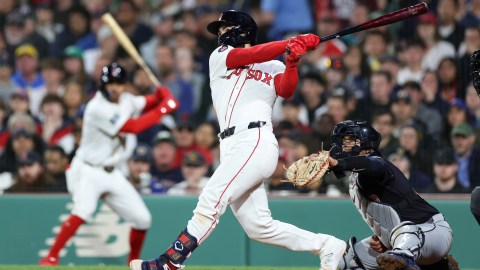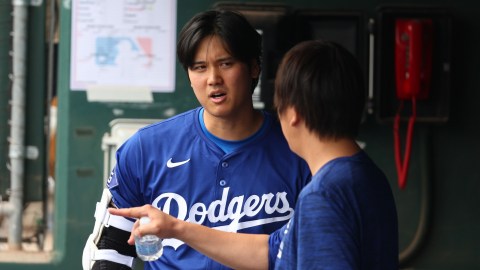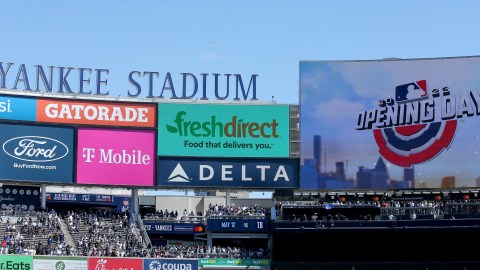 I am one-eighth Native American. I have no idea if that’s relevant to this conversation, as I’ve visited the Yerington, Nev., Paiute tribe about twice in my life, and primarily have looked at my membership as a way to take advantage of whatever institutionalized affirmative action may exist. I don’t self-identify as Native American unless I’m checking a box, and I’ve never actively been involved with the tribe.
I am one-eighth Native American. I have no idea if that’s relevant to this conversation, as I’ve visited the Yerington, Nev., Paiute tribe about twice in my life, and primarily have looked at my membership as a way to take advantage of whatever institutionalized affirmative action may exist. I don’t self-identify as Native American unless I’m checking a box, and I’ve never actively been involved with the tribe.
Like I said, I have no idea if this information is relevant, but it seemed a fair disclosure.
However, like many intelligent people, the television show South Park has made a huge impact on my social politics and the way in which I view the world. Through the lens of pop culture, this cartoon has become a more meaningful social satire than the highest of New Yorker-approved high art.
Likewise, with the controversy surrounding Native American sports logos back to being a hot topic, it’s impossible not to draw a parallel between that debate and one specific episode of South Park from all the way back in 2000. The episode, entitled “Chef Goes Nanners” (the entirety of which can be viewed freely and legally by clicking here) involves the changing the flag of the city of South Park, which divides the town over issues of sensitivity versus tradition.
For those out of the loop, the issue of depicting Native Americans in team logos again came up for debate a few weeks ago when new Major League Baseball batting practice cap designs were leaked featuring the old Atlanta Braves screaming Indian logo. The debate was again renewed this week, as Washington D.C. mayor Vincent Gray said he wants the Redskins to talk about changing their name if they move back within city limits.
These two incidents again stirred an old debate of racial sensitivity longstanding tradition.
In the aforementioned South Park episode, the town’s flag actually features the lynching of an African-American man (which, we admit, is an extreme example). Part of the town wants to change what they view as a racist symbol, while the other half of the town wants to uphold the city’s history. And, while Chief Wahoo and the Redskins’ logo may not quite be as bad as depicting a lynching, they’re much, much closer than their defenders would like to admit.
Ultimately, the conclusion that South Park comes to is that “sometimes history isn’t worth defending,” and that is absolutely the case with these antiquated, flatly racist depictions.
The problem isn’t just that these logos are racist, but that a large number of people don’t even pretend to see how they could be viewed as problematic. Moreover, these are the kinds of people likely to go on the offensive, deriding the pro-P.C. crowd for bullying. But while political correctness can absolutely go too far, this is not such an instance.
Simply put, it’s not OK to rally behind a racial slur like “redskin.” It’s not okay to depict an entire group of people (outside of the confines of humor or satire) as a literal cartoon, morphing them into your unfounded conceptions of a savage race prepared to take your scalp. But the kinds of people who don’t see also breed the same kind of idiotic thinking that this same logic means the Arizona Cardinals are somehow offensive to birds (if you’ve ever espoused this argument, you’re probably beyond help at this point).
There are plenty of instances throughout the history of humanity where history has been left behind, rather than being saved, because it’s not consistent for what we should strive for as a society. Likewise, as a society, we should strive for something greater than needing to root for logos with generalizing, untrue, racist roots.
But again, the problem is the individual, and why so many people feel that this is such a wholly important piece of history that its overt racism outweighs the personal need to preserve it for preservation’s sake. To that, the only reply can be further questions.
Why is the Redskins’ logo so important to you? Why does it ultimately matter so much to you to keep a baseball cap’s logo in place or to continue to refer to your team by a name which you would never, ever dare to actually call another human being? Why is this history so worthy of being preserved?
I suspect that many of the answers to these questions have little to do with the subject actually at hand, but rather a general distaste for political correctness in general. But, whatever the reason, it’s clear that those who continue to stand behind symbols such as the racist Native American logos which continue to populate sports are on the wrong side of history.
These depictions, sooner rather than later, are going to be only a part of history, and those still pining for them will be left behind to revel in the past while the rest progress towards a higher target.



